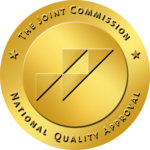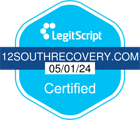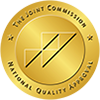2024 trends in drugs are driven by changing norms, changing drug policy, and ongoing expansion of illicit markets. Some drugs trend or go mainstream, and some speak to some communities because they work or are easy to get. It is extremely vital to identify the most prevalent drugs in the current year and observe how they affect public health and what type of effective treatment can be established for addiction.

Cannabis
Marijuana is still a universal subject of controversy when it comes to substance use in 2024. Despite more legalization, its use has gone mainstream across all demographics, from young adults to the elderly who try to self-medicate chronic pain or stress. Medical and even recreational marijuana use has been on the rise, with people consuming edibles, oil, and high THC-based strains heavily.
Legalization of marijuana, though, isn’t saying it’s safe. The high-THC potencies have been linked with addiction, altered mental status, and danger of developing psychiatric illnesses like psychosis in susceptible individuals. Edibles have also been especially dangerous due to delayed onset and causing the users to unintentionally ingest more than is required. With these dangers being present, cannabis is leading the public health vs. individual liberty debate, as researchers are eager to see education and moderation being promoted.
Prescription Drug Abuse
In 2024, the misuse of prescription medications continues to be a significant public health concern, with opioids, benzodiazepines, and stimulants at the forefront. While these drugs serve vital medical purposes when used as directed, their potential for misuse remains high.
The Ongoing Opioid Epidemic
Despite efforts to reduce opioid prescriptions, substances like oxycodone and fentanyl remain widely misused. Synthetic opioids, in particular, have fueled a staggering number of overdoses due to their extreme potency. Counterfeit pills containing fentanyl are becoming more prevalent, putting recreational users at grave risk.
Misuse of Benzodiazepines
Drugs like Xanax and Ativan, prescribed for anxiety and insomnia, are often abused for their calming effects. Long-term misuse can lead to physical dependency, withdrawal symptoms, and heightened risks of overdose when combined with alcohol or other substances.
The Appeal of Prescription Stimulants
Stimulants like Adderall and Ritalin, prescribed for ADHD, are frequently misused by students and professionals seeking increased focus and productivity. While these drugs may provide short-term benefits, their misuse often leads to dangerous side effects, including cardiovascular issues and addiction.
Efforts to combat prescription drug misuse include stricter prescribing guidelines, public awareness campaigns, and improved access to addiction treatment services.
Synthetic Drugs
Synthetic drugs, often designed to mimic traditional substances while skirting legal restrictions, are becoming increasingly popular in 2024. These drugs, manufactured in unregulated labs, are attractive due to their affordability and potency but come with unpredictable and often life-threatening side effects.
Synthetic Cannabinoids
Marketed as legal alternatives to cannabis, synthetic cannabinoids like K2 and spice are particularly dangerous. Their chemical makeup varies widely, resulting in effects ranging from mild euphoria to severe psychosis, seizures, or death.
Synthetic Opioids and Stimulants
Synthetic opioids, such as fentanyl analogs, are being illicitly mixed into other drugs like heroin or counterfeit pills, leading to a sharp rise in overdose deaths. Similarly, synthetic stimulants, often sold under the guise of “bath salts,” are known to cause paranoia, aggression, and long-term neurological damage.
Addressing the synthetic drug crisis requires innovative approaches, including widespread distribution of overdose reversal medications like naloxone, enhanced law enforcement efforts, and accessible harm reduction programs.
Club Drugs
Club drugs remain a key part of the party scene in 2024, particularly among young adults and festival-goers. Drugs like MDMA (commonly known as ecstasy), ketamine, and cocaine are favored for their euphoric and energy-boosting effects.
MDMA (Ecstasy)
MDMA’s popularity stems from its ability to enhance feelings of empathy and connection, making it a common choice at raves and music festivals. However, risks such as dehydration, overheating, and serotonin depletion remain significant, mainly when used in unsafe environments.
Ketamine
Once limited to medical and veterinary use, ketamine has gained popularity for its dissociative effects. While it’s now being explored as a treatment for depression in controlled settings, recreational use can lead to memory loss, addiction, and long-term cognitive impairments.
Cocaine
Despite its long history, cocaine remains a widely used stimulant. Its short-lived effects often lead to repeated use in a single session, increasing the risk of addiction, cardiovascular issues, and severe mental health consequences.
Education campaigns focusing on harm reduction and the long-term impacts of club drugs are essential for minimizing their risks.
Psychedelic Drugs
Psychedelics such as psilocybin (magic mushrooms), LSD, and DMT are experiencing a resurgence in 2024, driven by growing interest in their therapeutic potential. Emerging studies suggest that these substances could help treat conditions like depression, PTSD, and addiction when used in clinical settings.
Psilocybin and Mental Health
Psilocybin mushrooms have been praised for their potential to help people with treatment-resistant depression when used carefully in clinical settings. But outside of that safe, guided environment, using these substances recreationally can be emotionally overwhelming. What starts out as curiosity or a desire to feel better can quickly turn into something unsettling. People may experience intense fear, confusion, or deep emotional pain—especially if they already struggle with anxiety, depression, or past trauma.
In unregulated settings, there’s no one to guide you through a bad trip or help you come down safely. The experience can leave some feeling even more lost or emotionally raw than before. While psychedelics might hold promise in therapy, using them casually can worsen mental health, intensify emotional struggles, and leave lasting psychological scars. Healing takes intention, support, and the right setting—not just a substance.
LSD and Creativity
LSD has long been associated with expanded consciousness, spiritual insight, and bursts of creativity. For some, the appeal lies in its ability to unlock different ways of thinking or seeing the world. But what’s often overlooked is just how unpredictable and intense those experiences can be—especially when used without guidance or in the wrong mindset.
Unsupervised use of LSD can lead to overwhelming emotions, frightening hallucinations, or a deep sense of disconnection from reality. For people with underlying mental health challenges—or even those simply going through a hard time—these experiences can trigger panic, paranoia, or long-lasting emotional distress. What starts out as curiosity or a search for clarity can quickly spiral into confusion, fear, or even trauma.
While some people walk away from LSD with positive experiences, others are left feeling unsettled or emotionally shaken for days, weeks, or longer. That’s why it’s so important to approach substances like LSD with caution and respect—because when used without support or intention, the risks can outweigh the insight.
DMT and Profound Experiences
DMT, often referred to as the “spirit molecule,” offers users intense but brief psychedelic experiences. While some find these experiences transformative, others report overwhelming anxiety or confusion.
While psychedelics hold promise in therapeutic contexts, it is crucial to differentiate between supervised medical use and recreational experimentation, which can lead to harm without proper guidance.
Contact 12 South Recovery
The most popular drugs of 2024 reflect a dynamic world fueled by social trends, scientific progress, and the imagination of illegal markets. While others are surfacing for their therapeutic potential, others are endangering their consumers with lethal threats through misuse and uncontrolled use. Public education and easily accessible treatment remain essential in discouraging the danger of these drugs.
At 12 South Recovery, we work to support you through the confusion of addiction and mental health disorders. If you or a loved one is in crisis, call 12 South Recovery Today to learn about our empathetic, evidence-based treatment programs.


















